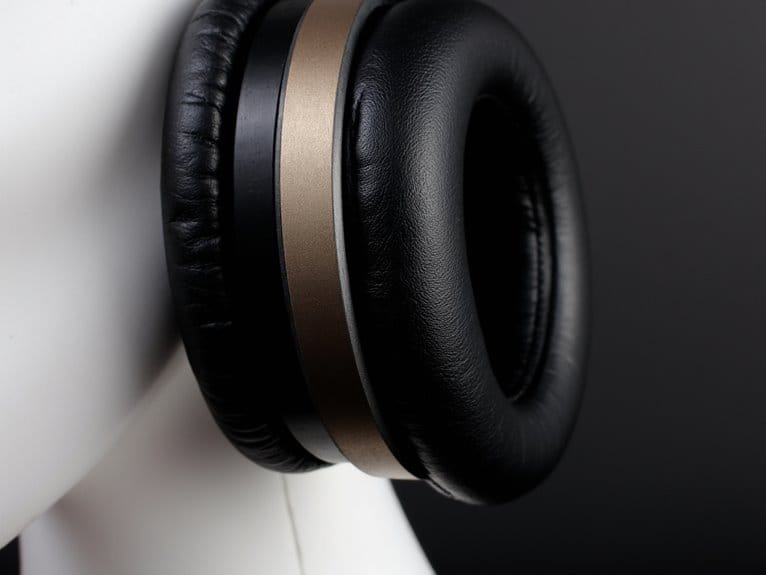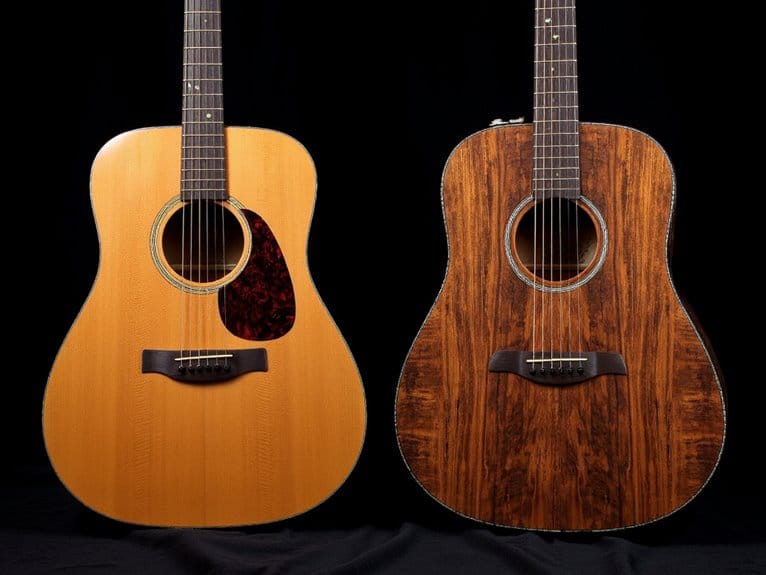Snare Drum Selection: Finding Your Signature Sound
Your snare drum selection defines your musical identity through shell material choices—maple for warmth, steel for aggression—combined with diameter and depth decisions that balance pitch and resonance. Wire configuration affects sensitivity, while hoop selection controls overtones and ring characteristics. Construction techniques like ply versus stave shells, bearing edge angles, and tuning philosophy must align with your genre’s demands, whether jazz requires brushwork sensitivity or metal needs explosive attack. Understanding these interconnected elements reveals your signature sound potential.
We are supported by our audience. When you purchase through links on our site, we may earn an affiliate commission, at no extra cost for you. Learn more.
Notable Insights
- Shell material defines your core sound—maple and birch woods offer warmth, while steel and brass provide aggressive cutting power.
- Diameter and depth balance pitch and resonance—smaller shells create higher pitch, deeper shells add body and sustain.
- Snare wire configuration shapes sensitivity and tone—coiled steel for brightness, cable wires for darker character, adjustable tension for versatility.
- Hoop selection controls overtones and ring—single-flanged for sustain, die-cast for focused attack, material affects tonal richness.
- Match tuning and components to your genre—tight setups for metal’s explosive attack, sensitive configurations for jazz brushwork.
Shell Material: The Foundation of Your Sound
When I first started building my drum collection, I’ll admit I didn’t fully grasp how dramatically shell material would shape my sound—but after years of A/B testing everything from vintage maple to modern titanium, I can confidently say it’s the single most influential factor in your snare’s voice.
Wood shells, particularly maple and birch, deliver those warm, complex tones that blend beautifully in studio recordings, while metal options like steel and brass provide the aggressive shell characteristics needed for cutting through dense mixes. Additionally, shell thickness plays a crucial role in determining your overall tone, with thinner shells producing a fatter sound and more warmth, while thicker shells offer greater projection and a higher pitch.
Your choice directly impacts sound projection—mahogany’s deep warmth works perfectly for jazz, while birch’s bright attack dominates in metal contexts. Multi-ply builds enhance both durability and sound projection, making them essential considerations for professional applications. Understanding these fundamental differences will guide every subsequent decision in your snare selection process. Consider that venue acoustics significantly influence your shell choice, as boomy spaces demand drums with superior articulation like brass or titanium options.
Size and Depth: Balancing Pitch and Resonance
Once you’ve settled on your shell material, the next decision that’ll dramatically shape your snare’s personality involves finding that sweet spot between diameter and depth—a balance I’ve learned can make or break your sound in ways that surprised me early in my drumming journey.
The diameter impact on pitch is straightforward: smaller 10″-12″ shells produce higher pitches, while standard 14″ drums offer that familiar balanced tone most of us recognize.
However, depth resonance tells a different story entirely, affecting body and sustain rather than pitch itself. Deeper 7″ shells move more air, creating fuller volume and enhanced resonance, while shallow 4″-5″ depths deliver quicker, brighter attacks with less sustain—perfect for genres demanding articulate, snappy responses. Interestingly, smaller diameter drums can still maintain fullness if they possess greater depth.
When recording your snare, consider how dynamic microphones like the industry-standard SM57 excel at capturing the high sound pressure levels that snare drums produce, making them ideal for both studio and live applications.
Snare Wire Configuration: Crafting Sensitivity and Response
While shell material and dimensions establish your snare’s fundamental character, the wire configuration beneath your drum represents where the real magic happens—transforming ordinary drum hits into that distinctive snare crack we can’t live without.
You’ll find snare wire types ranging from coiled steel offering bright sensitivity to cable wires delivering darker, drier tones perfect for marching contexts.
Wire gauge affects your response speed—medium-gauge steel provides crisp attack, while synthetic gut creates extreme sensitivity with dry character.
Wire gauge determines your snare’s personality—steel delivers crisp precision while synthetic gut offers ultra-sensitive, dry articulation for discerning drummers.
Strand spacing influences contact area; closer spacing boosts sensitivity but may reduce clarity.
Modern adjustable tension systems let you fine-tune response across dynamic ranges, with dual-adjustable models offering independent control over wire groups for unprecedented versatility.
Quality throw-off mechanisms ensure reliable wire engagement and release, preventing performance issues during critical moments.
Just as microphone positioning at 2-4 inches from the rim captures the optimal balance of punch and clarity, proper wire positioning ensures maximum contact with the resonant head for enhanced sensitivity and response.
Hoop Selection: Controlling Ring and Overtones
Beyond the intricate dance of snare wires lies another critical component that’ll dramatically shape your drum’s voice—the hoops that cradle your drumheads and determine how freely they can sing.
Different hoop types offer distinct approaches to vibration control, from single-flanged designs that encourage maximum sustain length to die-cast options that reign in excessive ring.
Your playing preferences should guide this choice, as flanged hoops deliver colorful overtone management perfect for jazz’s dynamic range, while die-cast versions provide the focused attack that heavier genres demand.
Steel hoops balance openness with control, brass adds bell-like richness, and wooden designs offer the shortest sustain with warm sound characteristics that effectively tame unwanted overtones.
Construction Techniques: From Plies to Bearing Edges
When you’re examining the shell that forms your snare drum’s foundation, you’ll discover that construction techniques vary dramatically in their approach to achieving tonal goals, with each method—whether ply, stave, or segmented—offering distinct advantages that directly impact your drum’s voice and playing characteristics.
Ply shell construction delivers warmer resonance through heat-compressed layers with alternating grain patterns, though it requires precise glue application for longevity.
Stave shell characteristics include focused articulation and natural wood tones, since vertical strips use minimal adhesive interference.
Segmented shell benefits encompass perfect roundness and tonal complexity through stacked ring construction.
Finally, bearing edge types dramatically influence your sound—sharper angles between 30° to 60° create brighter attacks, while rounded edges provide warmth and extended drumhead life through reduced stress concentration.
Tuning Philosophy: Matching Pitch to Musical Context
After years of watching drummers struggle with snare tuning decisions, I’ve learned that matching your drum’s pitch to its musical context isn’t just about personal preference—it’s about understanding how different tuning approaches serve specific sonic roles within various genres and ensemble settings.
Low-tuned snares deliver that thuddy character perfect for ballads, while high-pitched configurations create cracky articulation that cuts through urban gospel or pop arrangements. Rock typically demands medium-to-low tuning for balanced presence, whereas jazz benefits from higher pitches for clearer definition.
Your tuning techniques should adapt to the band’s volume and song energy, ensuring ideal integration. Managing musical dynamics requires understanding how batter and resonant head relationships affect sustain, pitch bend, and snare wire response across different playing volumes. Advanced Level 360 Technology reduces tuning frustrations by enhancing drumhead contact and providing consistent performance across pitch adjustments.
When recording or performing live, consider how overhead microphones capture your snare’s tonal characteristics differently based on your tuning choices, as proper mic placement and frequency response can either enhance or diminish the specific pitch qualities you’ve worked to achieve. Professional snare microphones feature cardioid patterns that isolate your carefully tuned snare sound while rejecting bleed from nearby cymbals and other kit pieces.
Genre-Specific Considerations: Aligning Drums With Musical Style
The relationship between snare drum selection and musical genre isn’t just about matching what you’ve heard on recordings—it’s about understanding how specific sonic characteristics serve the rhythmic and tonal demands of each style.
Choosing the right snare means understanding how sonic characteristics serve each genre’s specific rhythmic and tonal demands.
In rock, you’ll want medium-to-high tuning with maple or steel shells that deliver punchy rimshots and ghost notes, while jazz demands sensitivity for brushwork and subtle snare techniques that emphasize color over power.
Funk requires tight, crisp tuning with quick response for syncopated patterns, whereas metal calls for extremely tight setups using brass or steel shells for explosive attack.
Understanding these genre characteristics helps you choose drums that naturally complement your musical context, rather than fighting against the style’s inherent sonic requirements.
Similarly, drummers working in jazz settings benefit from understanding how bronze alloy construction affects tonal complexity and harmonic richness across their entire kit setup.
Frequently Asked Questions
How Much Should I Expect to Spend on a Quality Snare Drum?
You’ll spend $150-350 for decent beginner drums, $350-600 for intermediate quality, or $600+ for professional-grade instruments. Your budget considerations should match your skill level, while quality indicators include shell materials and hardware craftsmanship.
How Often Should Snare Wires Be Replaced for Optimal Performance?
You should inspect snare wires every six months and replace them every two years for ideal sound. However, snare wire longevity depends on your playing intensity, tuning habits, and wire quality.
What Maintenance Routine Keeps a Snare Drum in Peak Condition?
You’ll maintain peak condition through regular cleaning techniques using polishing cloths on shells and bearing edges, plus timely head replacement—batter heads annually and snare-side heads every few years when wear appears.
On a final note
You’ve now got the roadmap to finding your perfect snare drum, though I’ll admit the journey’s more art than science. Your signature sound lives somewhere between technical specs and personal taste, shaped by shell materials, wire configurations, and countless hours behind the kit. Don’t overthink it—trust your ears, experiment with different combinations, and remember that even seasoned pros sometimes discover their best sounds by accident.






